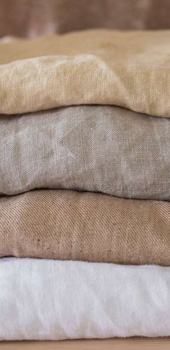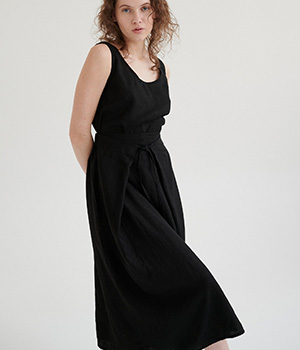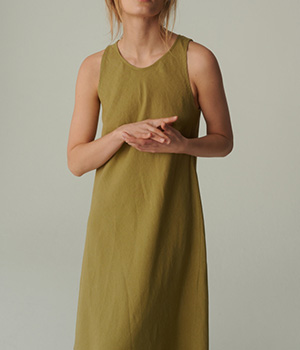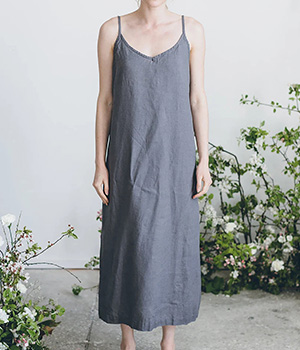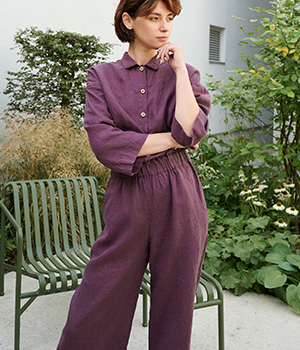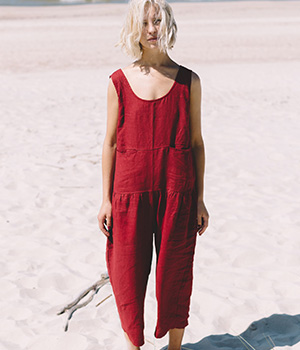Why Do Rich People Like Linen? 10 Luxury Reasons Linenwind Explains
Why Do Rich People Like Linen?
In the world of fashion and material preference, one subtle trend keeps rising among the elite: linen. Once regarded as a humble textile for coastal living or summer escapes, linen has emerged as a symbol of quiet luxury. So, why do rich people like linen?
The answer lies beyond mere appearances—into values, experiences, and production excellence. For manufacturers and brands that aim to serve high-end clients or build a label rooted in ethical luxury, understanding this preference is not only important, but strategic.

A Quiet Statement of Wealth
While fast fashion screams for attention, true affluence often whispers. Linen fits this narrative. It isn’t flashy, but it signals sophistication. Think about it—linen crinkles naturally, resists synthetic perfection, and yet costs more than cotton. This contradiction is exactly what attracts affluent buyers: imperfection that still exudes taste.
“Linen doesn’t try to impress. It already knows its value.”
— this is the ethos that drives its popularity among the upper class.
It’s no wonder lifestyle publications like The Vou describe linen as the “clothing of the rich,” not because it glitters, but because it doesn’t need to. Linen is a “quiet luxury,” a rising trend where wealth is shown through restraint, not logos.

Linen Natural Luxury: A Sensory Experience
High-net-worth individuals don’t just buy clothes—they invest in experiences. Linen, being a tactile and breathable fabric, offers a unique wearing sensation unmatched by synthetics or mass-market materials.
It breathes with the skin
It gets softer over time
It develops a patina of use that adds personality
From the streets of Milan to weekend escapes in the Hamptons, you’ll find well-heeled individuals donning loose, flowing linen garments that prioritize feel over fit, movement over molding.
Exclusivity Through Effort and Rarity
According to RoughLinen, linen production is not easy. The flax plant needs special conditions, and spinning linen fibers is a time-intensive craft. This alone adds scarcity—rich people are drawn to things not everyone can have or understand.
Less than 1% of global fiber production is linen
Requires manual harvesting and careful retting
Natural wrinkles mean each garment has a unique look
In an era where nearly everything is mass-produced, the deliberate imperfection of linen becomes an asset. Rich consumers pay more not just for the fiber—but for the story woven into each thread.

Linenwind Take on Timeless Linen Luxury
At Linenwind, we understand that behind every luxury linen garment lies a skilled manufacturer. As one of the trusted Linen Clothing Manufacturers with a focus on sustainable production and low minimums (starting from 30 pieces), we serve emerging labels and global designers alike.
From customized cuts to natural-dyed shades, Linenwind ensures that every piece doesn’t just meet expectations—it creates them. We’re proud to say our clients aren’t just selling garments. They’re delivering timeless experiences to discerning shoppers.
Whether you're launching a minimalistic resort wear line or building a premium lifestyle brand, Linenwind’s OEM services help you enter the quiet luxury market with confidence.
The Craftsmanship Behind Linen: Why It Commands a Premium
The appreciation for linen doesn’t stop at its feel or appearance. A big reason rich people prefer linen is the labor and skill required to produce it. Unlike synthetic fibers or even cotton, linen demands care, patience, and deep textile knowledge—making it a fabric of choice for connoisseurs.
From Flax to Fabric: A Complex Journey
Producing linen is a far cry from the industrial ease of polyester. The flax plant, from which linen originates, requires:
1.Rich, well-drained soil
2.Cool, temperate climates
3.Specialized harvesting methods like dew retting
The process is time-consuming and largely resistant to automation. This rarity builds value. In fact, genuine European linen (especially from Belgium and France) is often likened to wine: where it’s grown and how it’s treated makes all the difference.

Skilled Labor = Refined Product
It’s not just about the raw material. Linen has a coarse nature when raw and must be softened through washing and handling. Traditional spinning and weaving techniques, often done by hand or on legacy looms, bring a touch of human artistry.
Luxury consumers recognize this—it’s the tactile evidence of human touch that no machine can replicate.
At Linenwind, we continue to honor this craftsmanship by maintaining a strict quality assurance protocol:
1.Hand-inspected fibers
2.Small-batch dyeing
3.Traditional looms for artisanal projects
4.Finishing tailored to each brand’s vision
For brands that want to align with values like slow fashion, sustainability, and authenticity, working with experienced Linen Clothing Manufacturers like Linenwind becomes more than business—it becomes branding.
Why Brands Prefer Working with Linenwind
Affluent customers seek rare and meaningful garments—and brands that serve this market need reliable, agile, and ethical partners. At Linenwind, we provide more than just a product—we support your entire journey from ideation to fulfillment.

We help emerging fashion labels, resortwear brands, and eco-luxury startups build collections that mirror the taste of high-end clientele.
From Runway to Real Life: Case Example
One of our recent clients, a Monaco-based resortwear label, approached us with a simple brief: “Make linen elegant but unpretentious.” Starting with 30 pieces, they scaled to 3,000 units in 12 months—all while maintaining artisan quality.
Today, their pieces are worn by celebrities, featured in luxury travel editorials, and stocked in niche boutiques across Europe.
Behind this success was Linenwind unwavering commitment to quality, flexibility, and storytelling.

Linen as a Status Symbol: Beyond the Material
Luxury isn’t just about price—it’s about identity. Rich people don’t just wear linen; they signal through it. In a world saturated with fast fashion and synthetic blends, linen becomes a code—a subtle nod to discernment, sustainability, and refined taste.
Quiet Luxury in Fabric Form
Today’s luxury consumers aren’t always drawn to flamboyant logos or glittering embellishments. Instead, they favor understated elegance—what the industry now calls “quiet luxury.” Linen, with its naturally wrinkled texture, earthy tones, and minimalistic flow, perfectly embodies this trend.
In high-end circles, linen communicates that the wearer:
1.Values natural elegance over trend-chasing
2.Supports ethical and sustainable fashion
3.Prioritizes comfort and consciousness
And that’s why designers and retailers offering linen garments experience deeper connections with elite clientele.
Is Linen Only for Summer? A Rich Man’s Myth Debunked
Contrary to popular belief, linen isn’t just for coastal summers or tropical vacations. Affluent buyers are increasingly wearing linen year-round, layering it intelligently or using thicker weaves.
At Linenwind, we guide brands through selecting gram weights, weave styles, and finishing options to produce linen suitable for:
1.Autumn layering (heavier blends)
2.Winter interiors (wool-linen hybrids)
3.Formal linen pieces (tailored pants, blazers)
Rich people wear linen in winter because they understand how to style it and because quality linen breathes and insulates naturally without overheating.

Eco-Consciousness and Wealth: The Linen Link
Linen popularity among the affluent is also tied to sustainability. Flax, the source of linen, uses less water than cotton, grows quickly, and often requires no pesticides. The result? A low-impact textile with high-end appeal.
Linenwind sustainability commitment includes:
OEKO-TEX® certified fabrics
Closed-loop dyeing facilities
Recycled-paper hangtags
Biodegradable packaging options
Today wealthy consumers vote with their wallets. Brands aligned with ecological values stand out—not just for their products, but for their principles.

Emotional Connection and Longevity
Linen has character. It wrinkles, softens, and evolves over time. For luxury buyers, this sense of narrative—how a fabric changes with each wear—is deeply attractive. Unlike plastic-smooth synthetics that degrade quickly, linen becomes more intimate as it ages.
A quote from one of Linenwind long-term clients captures it well:
“You don’t just wear linen. You live in it. It’s the only fabric I own that feels like it remembers me.”
Brands seeking to foster deeper emotional engagement with customers can leverage linen’s organic charm to build brand loyalty and justify higher price points.
FAQ Section: What Buyers Want to Know
Is linen really a luxury fabric?
Yes. While linen is ancient, its production is still costly and artisanal. High-quality linen—especially from European flax—remains a symbol of luxury.
Why do rich people wear wrinkled linen?
Wrinkles are part of linen’s natural beauty. They communicate ease, confidence, and sophistication—something wealthy buyers appreciate.
Can I order custom linen pants in small batches?
Absolutely. At Linenwind, our MOQ starts at just 30 pieces, ideal for limited collections or market testing.
Is linen good for winter wear?
Yes, if made correctly. Heavier linen or blends with wool or cotton are ideal for cold seasons.
How does Linenwind support new designers?
We offer end-to-end support: from textile selection to pattern making, labeling, and packaging—with full transparency and small-batch flexibility.




